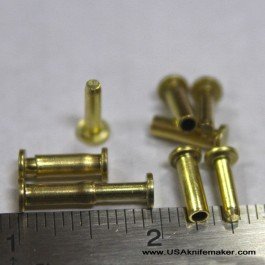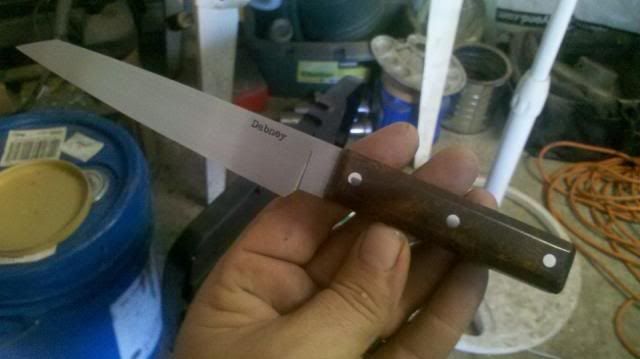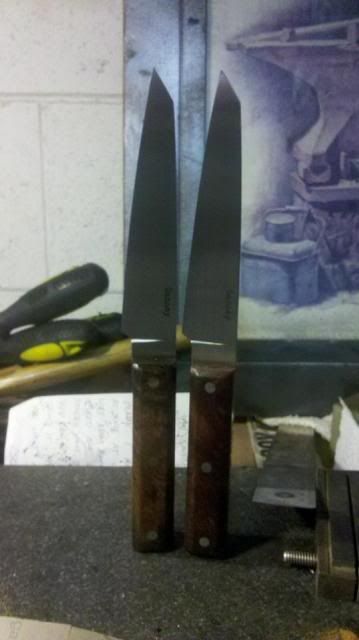BRad704
Well-Known Member
I've been approached by someone looking for a pair of kitchen knives with a little "more tactical look" than most kitchen knives. 1 utility (6" blade) and 1 paring (3.5" blade), and the design and materials are all up to me (although he did request carbon steel).
In my mind, I'm looking at:
1095 steel (0.094" for the util and 0.072" for the parer) Will be sending to Peter's for heat treating.
Probably a forced patina to darken the blades
Mostly black/OD/dark materials for the scales. (leaning toward CF bolster and OD green scales)
Real questions are:
1 - For a kitchen knife that will be wet/washed very often... Are fibrous materials like Linen/burlap micarta ok? I am worried about the fibers soaking up blood/chicken juice/etc.
2 - Hardware... As long as I seal the threads and around the head, would there be any forseeable sanitation or washing issues with using 6-32 or 8-32 button head screws (along with threaded tubes, of course)? I think the bolt-on handle appearance could work well on these.
3 - Any other pro-tips from our kitchen knife masters?
Thanks guys!
BRad
In my mind, I'm looking at:
1095 steel (0.094" for the util and 0.072" for the parer) Will be sending to Peter's for heat treating.
Probably a forced patina to darken the blades
Mostly black/OD/dark materials for the scales. (leaning toward CF bolster and OD green scales)
Real questions are:
1 - For a kitchen knife that will be wet/washed very often... Are fibrous materials like Linen/burlap micarta ok? I am worried about the fibers soaking up blood/chicken juice/etc.
2 - Hardware... As long as I seal the threads and around the head, would there be any forseeable sanitation or washing issues with using 6-32 or 8-32 button head screws (along with threaded tubes, of course)? I think the bolt-on handle appearance could work well on these.
3 - Any other pro-tips from our kitchen knife masters?
Thanks guys!
BRad




